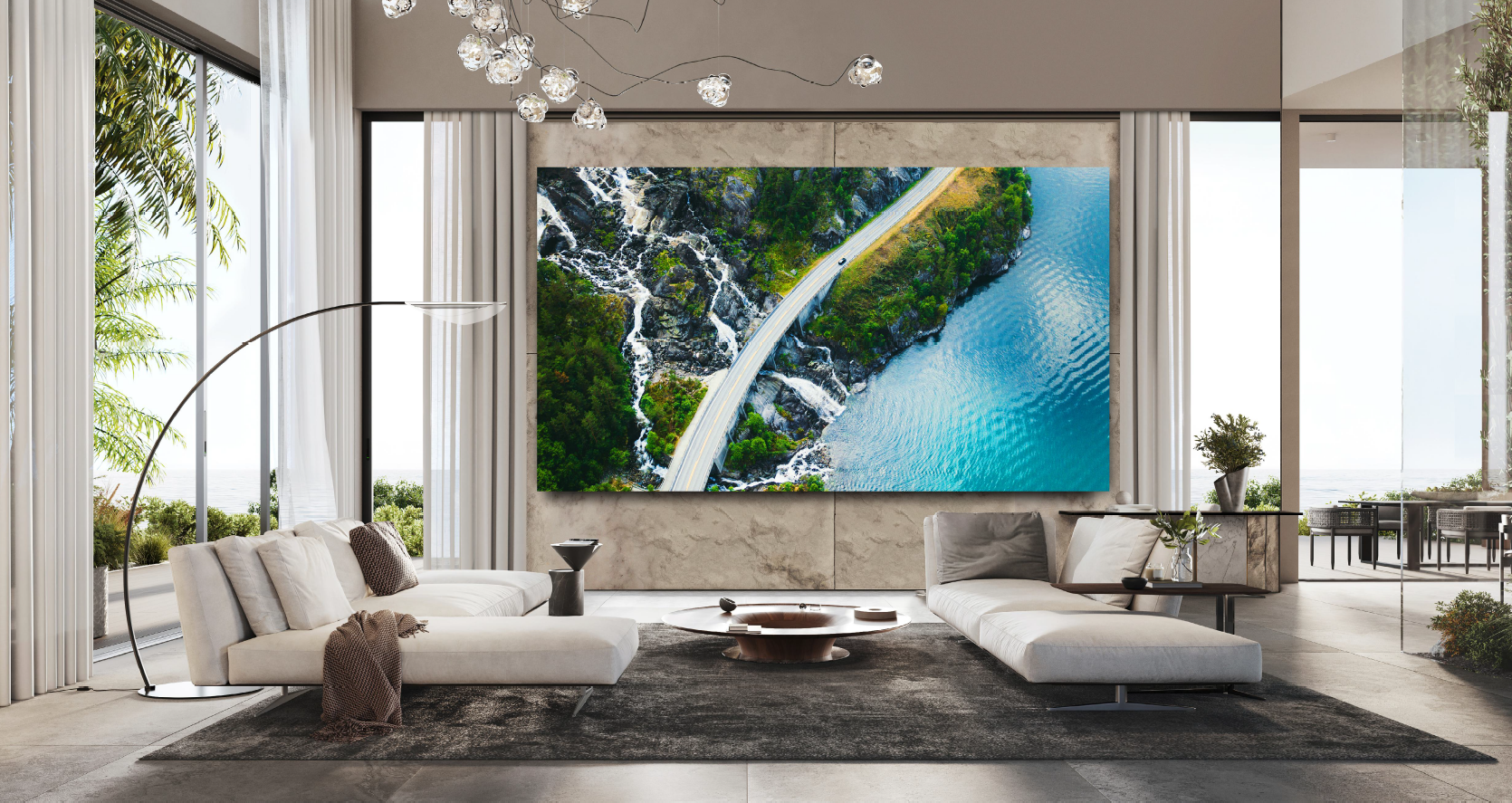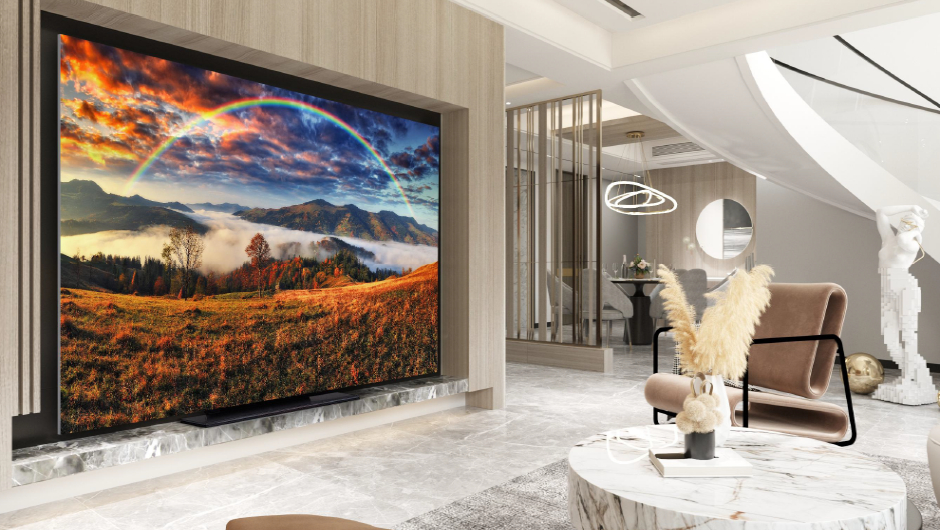I want LG's 118-inch micro-LED 4K TV, but I'll never be able to afford it

LG has announced a 118-inch version of its giant 136-inch micro-LED TV. Unveiled at CEDIA 2023, the well-proportioned TV is the latest in LG’s MAGNIT range of micro-LED TVs (via DisplaySpecifications). Priced at $237,000 (around £190,000 / AU$370,000) the LG is not only big in size, but high in price. No official announcement was made at CEDIA regarding price and availability in other regions.
The 118-inch TV is a smaller version of the $300,000, 136-inch MAGNIT TV released in 2022, both of which use a 4K micro-LED display. Interestingly, the 118-inch also comes with a similar optional upgrade that the 136-inch does: the addition of Bang & Olufsens’ Beolab speakers. The 136-inch can be paired with the Beolab 90, which retails for roughly $80,000 for two, while the 118-inch can be paired with the Beolab 50, which was used during LG’s demo of the 118-inch MAGNIT TV at CEDIA 2023.
With eight million pixels the size of a human hair, LG promises pure blacks and incredible contrast from the self-lighting pixels. The TV also features LG’s Alpha 9 processor, which can be found in the likes of the LG C3 and LG G3, aims to reduce noise in the TV’s picture and improve color reproduction. The screen also has a 120Hz refresh rate, so who knows, maybe we’ll be recommending this among the best gaming TVs for PS5-loving oligarchs.
With such a hefty price, the 118-inch MAGNIT TV is very much aimed at luxury home- and/or yacht-owners and as such, but with more and more TV manufacturers offering large screen options, even the super-rich may be wondering if they need to spend this much.

A TV for the select few
With so many TV manufacturers offering giant screens these days, such as TCL’s 115-inch mini-LED TV, which is currently available in China and retails for roughly $11,000, or Sony’s 98-inch mini-LED that retails for $9,999, both offer alternatives to the 118-inch MAGNIT micro-LED from LG. And with Samsung announcing a 98-inch 8K TV for $40,000, the LG 4K 118-inch’s price seems unrealistic on the face of it.
Now don’t get me wrong, I’d love a TV at this size, because the immersion you'd get with this TV would be at a completely different level. But, only a select few will have the space for a TV this size and, more importantly, the budget for this type of TV.
LG USA’s senior vice president Michael Kosla described the 118-inch MAGNIT TV as the “sweet spot” between the 136-inch micro-LED and the mind-blowing 97-inch wireless OLED M3, which retails for for $29,999 / £27,999. You can’t argue with the fact that the 118-inch does, indeed, sit in between two models, but it’s still a monumental jump from the M3.
Sign up for breaking news, reviews, opinion, top tech deals, and more.
However, the MAGNIT range uses micro-LED, which is a cutting-edge technology being touted as OLED-beating that offers extreme levels of contrast, detail and shocking levels of brightness (Samsung is also a proponent of the tech, and believes that 10,000 nits is achievable – that's five times what you get from the likes of the Samsung QN90C). You expect to pay a hefty price tag for the tech of the future, but the fact remains that it certainly isn’t a viable option for 99.9% of us, and there's an increasing number of more affordable colossal TVs.
Although the idea of a super-bright, detailed 118-inch TV seems like a dream viewing experience, until prices become more affordable (which is rumored to happen sooner than you might think), for most people who’d love – including me – sadly the MAGNIT range of LG TVs will remain just that; a dream.
You might also like
- Samsung’s 89-inch micro-LED TV
- OLED vs micro-LED
- Projector vs 98-inch TV - what’s the best option?

James is the TV Hardware Staff Writer at TechRadar. Before joining the team, he worked at a major UK based AV retailer selling TV and audio equipment, where he was either telling customers the difference between OLED and QLED or being wowed by watching a PS5 run on the LG 65G2. When not writing about the latest TV tech, James can be found gaming, reading, watching rugby or coming up with another idea for a novel.